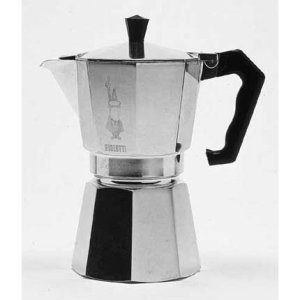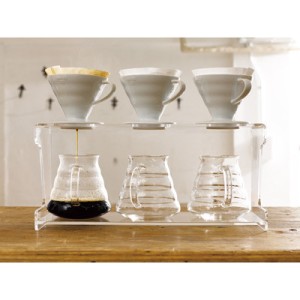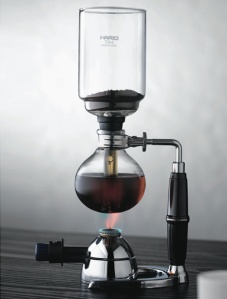I haven’t written any blogs recently. Personal circumstances just haven’t permitted me to do so, but there is now light at the end of the tunnel, so here it is, a blog….finally.
I was very fortunate to spend last Saturday afternoon in the wilds of the Norfolk countryside at a place called Grey Seal Coffee Roasters, where I was attending a coffee brewing experience, which had been purchased for me as a birthday gift.
Before I wax lyrical about my afternoon in the company of David and Tobias, from Grey Seal Coffee Roasters, let me explain what Grey Seal Coffee is all about.
Grey Seal Coffee Roasters is a small independent coffee roastery based in Glandford, a small hamlet in the Glaven Valley in North Norfolk. When I say roastery, I mean they roast their OWN fresh green coffee beans, sourcing them ethically from around the world, selling them to the public and the wholesale trade around Norfolk and throughout the UK. You can find them at their website, www.greysealcoffee.co.uk. They are named after the grey seals that frequent the beaches of North Norfolk.
So, what did I do whilst I was there? Well, the afternoon was ALL about brewing coffee, tasting coffee and learning how to make coffee PROPERLY. There were FIVE (yes, five) methods of making coffee on offer, ranging from the most simplistic up to the incredibly dramatic. The lovely thing was you were able to taste each method as you went which, as a coffee lover, I was sincerely looking forward to!
We started with a simple history of the coffee bean and how it was first discovered, and where. In Ethiopia, in fact. By a goatherd who noticed that his goats got a bit bouncy after eating a fruit (yes, a fruit – bear with me). This fruit contained a pip (or bean). This was your coffee bean and, by chance, they realised that if they roasted the beans, they had a rather lovely beverage. Plus, they still make a drink from the fruit that contains the bean. Call it Ethiopian Red Bull, if you will.
I also learnt where my coffee beans come from. Primarily, most coffee beans come from equatorial countries between the two tropics of Cancer and Capricorn (Ethiopia is one of them). The beans from countries taste different, and brewing processes vary. Plus, I found out that the Robusta bean is used for espresso coffee, and the Bourbon bean is very high quality, a bit like a fine wine.
For our session, we were using the Doi Chaang Peaberry bean from Thailand (which you can order on the Grey Seal website) for each of the brewing processes, so that we could see (and taste) how each different process affected the coffee’s colour and flavour. A bit like wine tasting, if you have ever tried it.
So, FIVE methods of brewing coffee, you ask? Yep, we used five. Some of which I had seen and used before, some I hadn’t. Having been to Blue Bottle coffee in San Francisco on a business trip this year, I had been fascinated by the drip and siphon methods Blue Bottle use and, as luck would have it, those were two of the methods we would see, experience and taste.
We were provided with recipe cards for each method to take home, as well as a bag of complimentary coffee beans. I chose the Doi Chaang Peaberry that we used, as it had such lovely flavour. We used the recipe cards provided by Grey Seal, with some instruction, to learn how to use, and taste, the five brewing methods below….
METHOD 1 – The Cafetiere
I am pretty sure we have all used a cafetiere at some point in our lives. Put the coffee in, put the hot water in on top, press down the plunger. This creates a very muddy, dark coffee with a very rounded flavour, almost fruity, and the oil in the coffee bean is also present. And, like tea, you need to warm the cafetiere first. I have used cafetieres many times, as I am sure you have.
METHOD 2 – The Mokka Pot
The mokka pot is the one you see on the stove top. A well-known brand is Bialetti. Fill up the bottom compartment with water to the valve level. Pop in the basket and fill with your ground coffee, levelling off the surface of the coffee. Screw the top chamber on and pop on the stove over the heat. Once it has stopped bubbling, you have your coffee. Pour and enjoy. I own a mokka pot coffee maker, and have done so for many years. My Sunday morning coffee pleasure, giving a deep, round coffee flavour, with a dark cloudy colour that is slightly more refined than the cafetiere method above. Plus, it is less oily than the cafetiere method.
METHOD 3 – The AeroPress
Invented in 2005 by the man who invented the Aerobie flying ring (bit like a Frisbee), the Aeropress was one method that was totally new to me and I found it quite amazing! The equipment is extremely light plastic (perfect for travellers like me) and it uses a plunger to push down the coffee through the Aeropress, filtering it through a small filter paper, and allowing for easy disposal of the coffee grounds once you are done. It also makes a clearer coffee than the previous two methods, with a nice, clean clear flavour.
METHOD 4 – Drip Filter/V60
Now this method was the one I wanted to see. I mentioned Blue Bottle coffee earlier, and when in San Francisco, I tried a drip filtered Blue Bottle coffee, and was amazed at the clearness of the coffee itself (you could see the bottom of the cup), and was blown away by the flavour of the coffee. And I was not disappointed. The Grey Seal coffee had just as much flavour as the Blue Bottle coffee I had, if not more. The drip filter method is exactly as described. You place a ceramic drip filter on top of your cup or your coffee jug, put in a filter paper and pour in the hot water over the coffee, once you have warmed and “bloomed” as mentioned above. I have to say that this was my favourite brewing method and I did purchase a ceramic drip filter. It creates a beautifully clear coffee, with amazing flavour. I just love the simplicity of this method and the coffee it creates.
METHOD 5 – The Siphon
The siphon method is pretty incredible visually. Sometimes known as the vacuum pot, it bears a passing resemblance to one of the old Victorian oil lanterns, and while we were there, the Grey Seal coffee baristas, used an incredible halogen lamp (imported from Japan) to heat the water in the siphon, which made it almost mesmeric to watch. The siphon uses a vacuum to brew the coffee, and these, again, are another method used by Blue Bottle coffee in the USA. I have to say though, whilst quite technically challenging, the siphon creates the most amazing coffee. Totally clear with the highest degree of flavour experienced on the day. Delightful.
SUMMING UP
With all of these methods, we used filtered water to ensure a better coffee flavour. You should always use filtered or bottled water for the best coffee plus, it does maintain your equipment by avoiding the dreaded lime scale too.
I also learnt that you should let the coffee “bloom”. This is done by pouring on a small amount of hot water, just enough to wet the coffee grounds and leave it for a few moments. You will see the coffee bubble and crack, with oily bubbles appearing. This is essential to good coffee. Once the blooming is done, pour on the rest of the water using whatever brewing method you are using. Once brewed, pour your coffee immediately. Like tea, coffee stews, and then gives a sour, bitter taste.
Only grind the beans you need. Once you have ground your coffee beans, they lose quality quickly, within days, in fact. And for good quality coffee grounds, use a grinder that has burrs, NOT blades.
I had a great afternoon with Grey Seal. Not only did I experience great coffee, but I learnt lots of things to make my coffee experience even better. And, yes, I was buzzing afterwards! I can only congratulate Grey Seal on providing an informative, entertaining afternoon in great company with people who appreciate good coffee as much as I do. Coffee, when made well, is a lovely beverage, and like wine, once you have experienced the good stuff, you won’t want anything else.
More coffee anyone?
SCB x






